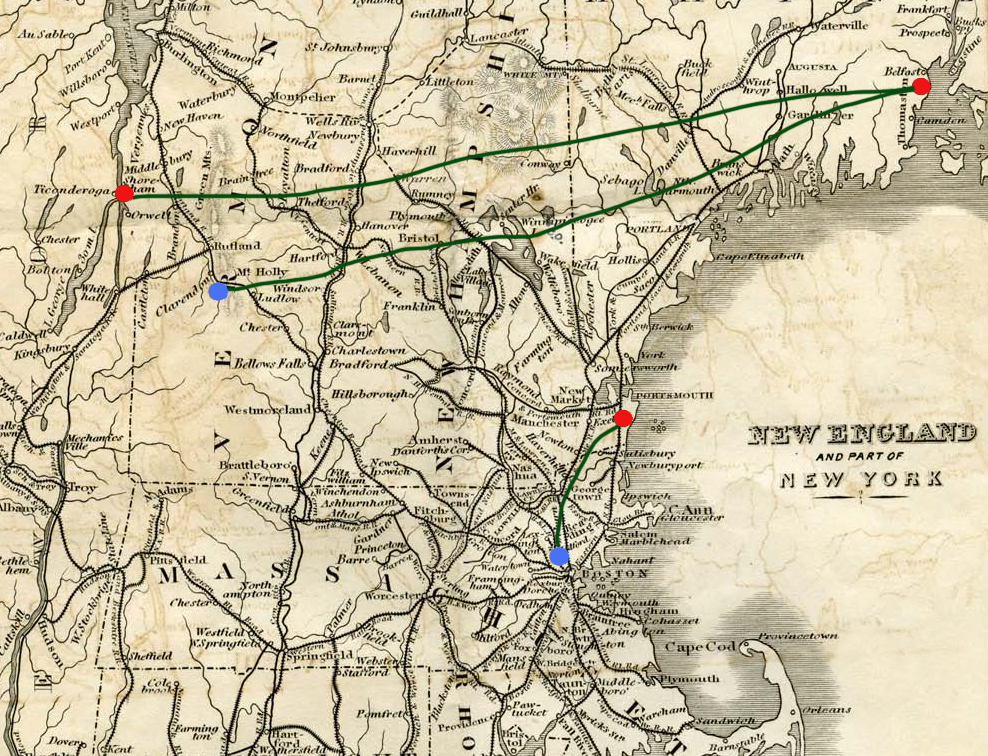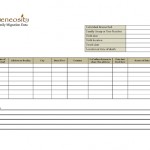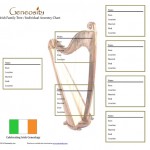- Tracing your family migration patterns can be a fascinating journey into the past. It can provide insight into the lives of your ancestors and the places they lived. More importantly, this brings you closer to your ancestors by helping you understand the history of your family and the events that shaped their lives. By researching your family’s migration patterns in genealogy, you can gain a better understanding of the places they lived, the cultures they interacted with, and the reasons why they moved. With the help of records, maps, and other resources, you can trace your family’s migration patterns and uncover the stories of their lives.
- You can create a fascinating genealogy visual reference and tool using our Family Data Sheet and Genealogy Timeline Chart. This free research chart can allow you to document family migrations and other useful information in a timeline format.
Table of Contents
- Introduction
- How to Use DNA Testing to Trace Your Family’s Migration Patterns
- Exploring Your Family’s Migration History Through Census Records
- Uncovering Your Ancestors’ Migration Paths Through Ship Passenger Lists
- Using Military Records to Trace Your Family’s Migration Patterns
- How to Research Your Family’s Migration Patterns Through Immigration Records
- Finding Your Family’s Migration Patterns Through Land Records and Maps
- Conclusion
How to Use DNA Testing to Trace Your Family’s Migration Patterns
Tracing your family’s migration patterns can be a fascinating and rewarding experience. Genealogical DNA testing is a powerful tool that can help you uncover your family’s history and uncover the paths they took to get to where they are today. Here are some tips on how to use DNA testing to trace your family’s migration patterns and ancestry.
1. Start with an Autosomal DNA Test. Autosomal DNA tests are the most comprehensive type of DNA test available and can provide you with a wealth of information about your family’s history. Autosomal DNA tests look at your entire genome and can provide you with information about your ancestry, including your family’s migration patterns.
2. Look for Matches. Once you have your results, you can start looking for matches with other people who have taken the same test. These matches can provide you with clues about your family migration patterns as well as where other families branched out. Look for matches that are from the same region or country as your family.
3. Analyze Your Results. Once you have identified some matches, you can start to analyze your results. Look for patterns in the matches you have identified. Are there any common surnames or locations? Are there any matches that are from the same region or country as your family?
4. Research Your Matches. Once you have identified some potential matches, you can start to research them. Look for records such as birth, marriage, and death certificates that can provide you with more information about your family’s migration patterns.
5. Talk to Your Family. Talking to your family can be a great way to uncover more information about your family’s migration patterns. Ask your family members about their own experiences and any stories they may have heard from their parents or grandparents.
Tracing your family migration patterns can be a fascinating and rewarding experience. DNA testing is a powerful tool that can help you uncover your family’s history and uncover the paths they took to get to where they are today. By following these tips, you can use DNA testing to trace your family’s migration patterns and uncover more about your family’s history.
Exploring Your Family’s Migration History Through Census Records
Exploring your family’s migration history through census records can be a fascinating and rewarding experience. Census records are a valuable source of information about the movements of individuals and families over time. By examining these records, you can gain insight into the lives of your ancestors and the paths they took to reach their current location.
Census records are compiled by the government and provide a snapshot of the population at a given time. They contain vital genealogical information such as names, ages, occupations, and places of birth. This information can be used to trace the movements of individuals and families over time.
The first step in exploring your family migration history can be to locate the census records for your ancestors. The U.S. Census Bureau maintains a website that allows you to search for census records by name, date, and location. You can also search for records by state or county. Once you have located the records, you can begin to analyze them.
When examining the records, look for patterns in the places of birth listed for your ancestors. This can help you determine where they originated from and when they moved to their (then) current location. You can also look for clues about their occupations and other aspects of their lives.
In addition to the U.S. Census Bureau website, there are other resources available to help you explore your family’s migration history. Many libraries and archives have collections of census records that can be accessed online or in person. You can also search for records on genealogy websites and in newspaper archives.
Exploring your family’s migration history through census records can be a rewarding experience. By examining these records, you can gain insight into the lives of your ancestors and the paths they took to reach their current location. With a little research, you can uncover the stories of your family’s past and gain a better understanding of your own history. Read more about researching census records here.
Uncovering Your Ancestors’ Migration Paths Through Ship Passenger Lists
The journey of uncovering your ancestors’ migration paths can be a fascinating and rewarding experience. Ship passenger lists are a valuable source of information for tracing the movements of your ancestors. These lists provide details such as the name of the ship, the date of departure, the port of origin, the port of destination, and the names of the passengers.
The first step in researching your ancestors’ migration paths is to identify the port of origin. This can be done by searching for records such as birth certificates, marriage certificates, and death certificates. These documents will provide information about the place of birth or residence of your ancestor. Once the port of origin is identified, you can begin to search for ship passenger lists.
The best place to start your search is online. There are numerous websites that offer access to ship passenger lists. These websites often provide searchable databases that allow you to search by name, date of departure, port of origin, and port of destination. It is important to note that some of these websites may require a subscription fee.
Once you have identified a ship passenger list that contains the name of your ancestor, you can begin to analyze the information. The list will provide details such as the name of the ship, the date of departure, the port of origin, the port of destination, and the names of the passengers. This information can be used to trace the migration path of your ancestor.
In addition to ship passenger lists, other records such as naturalization papers, immigration records, and census records can also be used to trace your ancestor’s migration path. These records can provide additional information such as the date of arrival, the port of entry, and the names of family members who may have accompanied your ancestor on the journey.
By researching ship passenger lists and other records, you can uncover your ancestors’ migration paths and gain a better understanding of their lives and experiences. This knowledge can provide a deeper connection to your family’s history and help you to appreciate the journeys that your ancestors took to reach their new homes.
Using Military Records to Trace Your Family Migration Patterns
 Military records can be a valuable source of information for tracing your family’s migration patterns. These records can provide a wealth of information about a family’s movements, including where they lived, when they moved, and why they moved.
Military records can be a valuable source of information for tracing your family’s migration patterns. These records can provide a wealth of information about a family’s movements, including where they lived, when they moved, and why they moved.
The first step in using military records to trace your family’s migration patterns is to identify the records that are available. Many military records are held by the National Archives and Records Administration (NARA). These records include enlistment papers, service records, and discharge papers. Additionally, some states may have their own military records, such as muster rolls and pension records.
Once you have identified the records that are available, you can begin to search for information about your family’s migration patterns. Start by looking for enlistment papers, which will provide information about where a person enlisted and when. This can provide clues about where a person was living at the time of enlistment. Additionally, service records can provide information about where a person was stationed and when they were transferred. This can provide clues about where a person moved during their service.
Finally, discharge papers can provide information about where a person was discharged from service. This can provide clues about where a person moved after their service. Additionally, pension records can provide information about where a person was living when they applied for a pension.
By using military records to trace your family migration patterns, you can gain a better understanding of where your ancestors lived and when they moved. This can provide valuable insight into your family’s history and help you to better understand your family’s past!
How to Research Your Family’s Migrations Through Immigration Records
Researching your family’s migration patterns through immigration records can be a rewarding and enlightening experience. Immigration records are a valuable source of information for genealogists and family historians, providing insight into the lives of our ancestors and the journeys they took to reach their new homes.
The first step in researching your family’s migration patterns is to identify the records that are available. Immigration records can include passenger lists, naturalization records, border crossing records, and other documents. These records can be found in a variety of places, including local, state, and national archives, libraries, and historical societies.
Once you have identified the records that are available, you can begin to search for your family’s immigration records. Start by searching for your ancestor’s name in the records. If you are unable to find your ancestor’s name, you can search for other family members or search for records from the same time period.
When searching for immigration records, it is important to remember that the information contained in the records may not be complete. Many records may be incomplete or missing information, so it is important to be patient and thorough when searching.
Once you have located your ancestor’s immigration records, you can begin to analyze the information contained in the records. Look for clues about your ancestor’s journey, such as the date of arrival, the port of departure, and the country of origin. You can also look for information about the family’s occupation, religion, and other details that can help you understand their journey.
By researching your family’s migration patterns through immigration records, you can gain a better understanding of your family’s history and the journeys they took to reach their new homes. With patience and persistence, you can uncover the stories of your ancestors and gain a deeper appreciation for their experiences.
Finding Your Family’s Migration Patterns Through Land Records and Maps
Tracing your family’s migration patterns can be a fascinating and rewarding experience. By researching land records and maps, you can gain insight into the movements of your ancestors and gain a better understanding of their lives.
Land records are a great place to start! These records can provide information about when and where your ancestors bought and sold land, as well as the names of their neighbors. This information can help you determine where your family lived and when they moved.
Maps can also be a valuable resource when researching your family migration patterns. Historical maps can show you the locations of towns and cities that your ancestors may have lived in, as well as the roads they may have traveled. You can also use modern maps to trace the paths your ancestors may have taken.
It’s important to remember that the records and maps you find may not always be accurate. It is important to cross-reference the information you find with other sources to ensure accuracy.
By researching land records and maps, you can gain a better understanding of the path of a family’s migration. This information can help you gain a deeper appreciation for the lives of your ancestors and the paths they took.
Conclusion
Tracing your family migration patterns can be a rewarding and enlightening experience. It can help you to understand the history of your family and the places they have lived, as well as the reasons why they moved. It can also provide insight into the cultural and social influences that have shaped your family’s history. By researching your family’s migration patterns, you can gain a better understanding of your family’s past and the impact it has had on your present.




